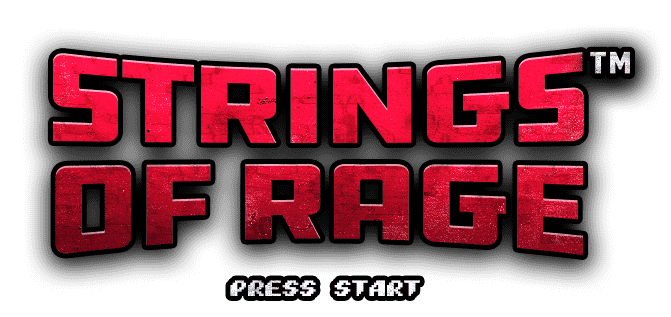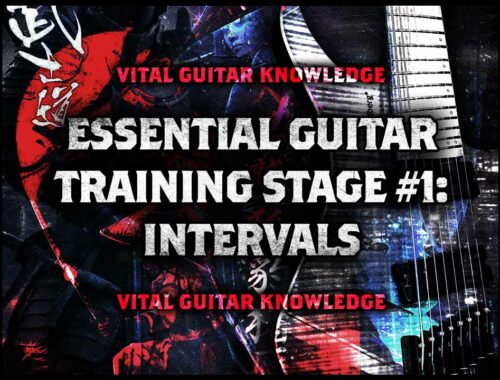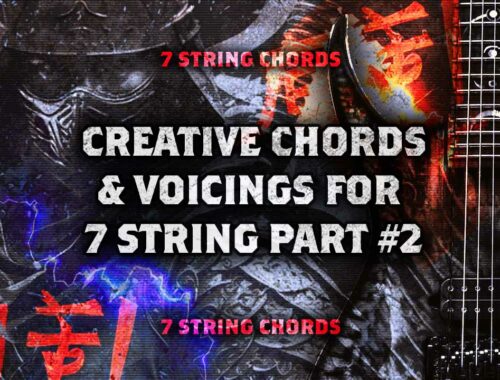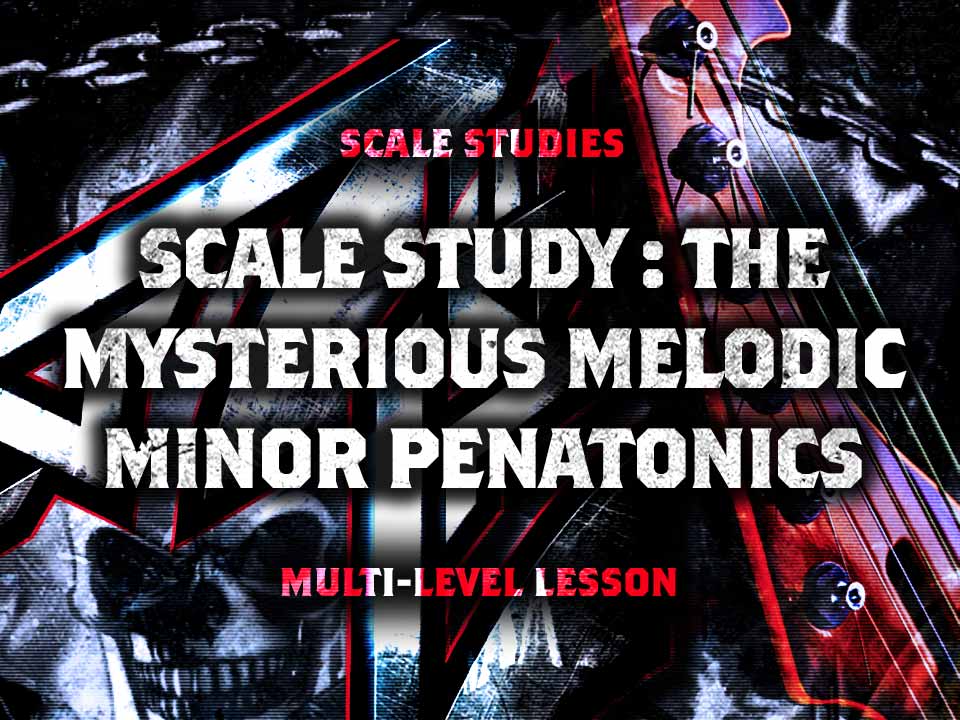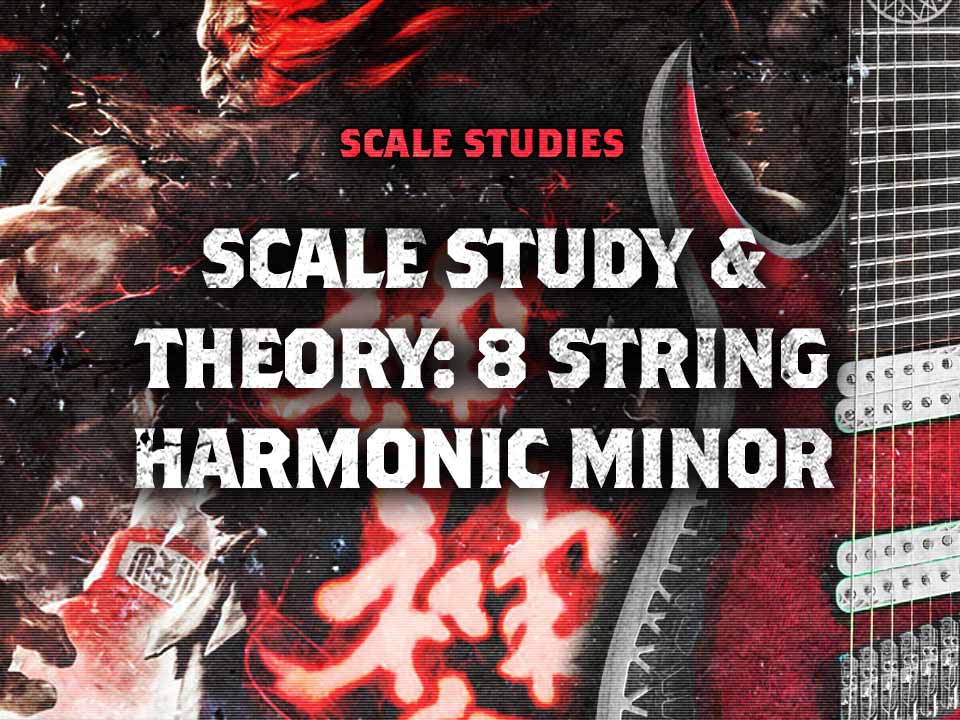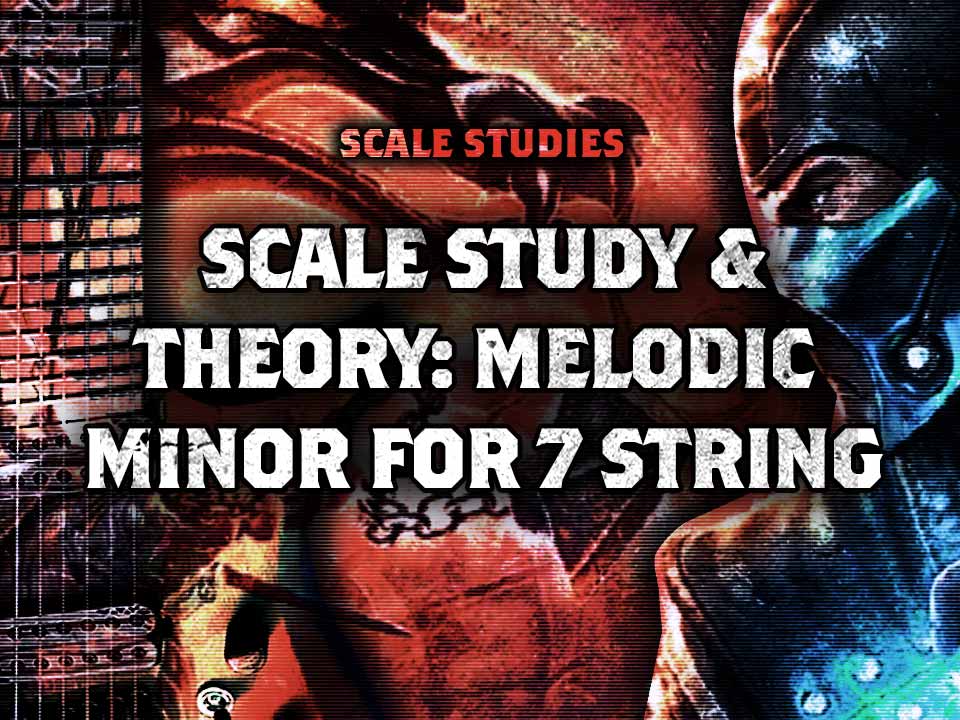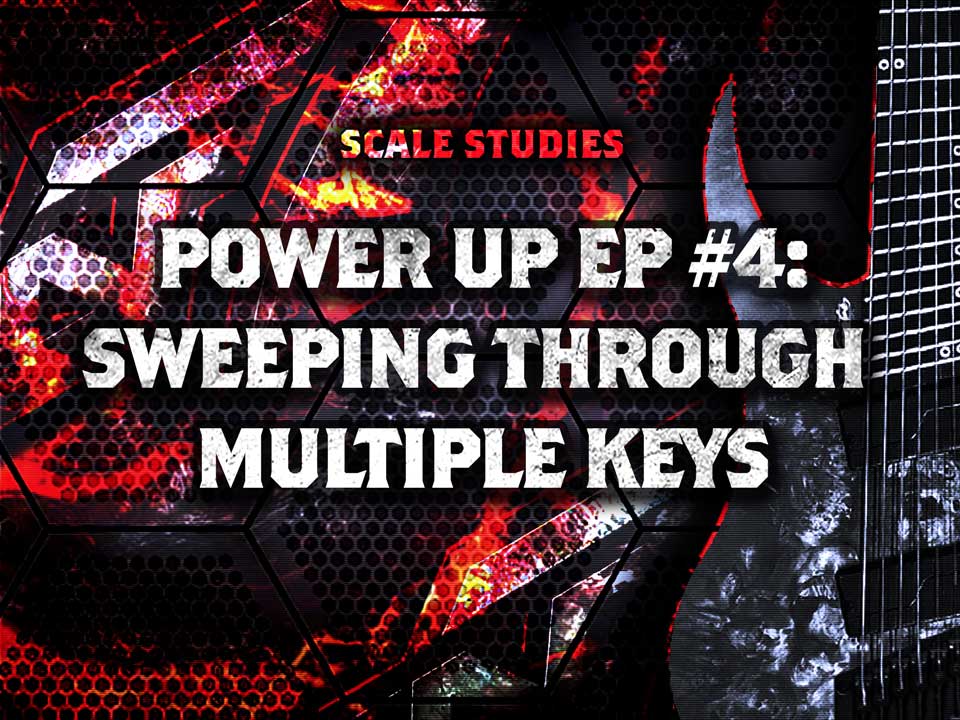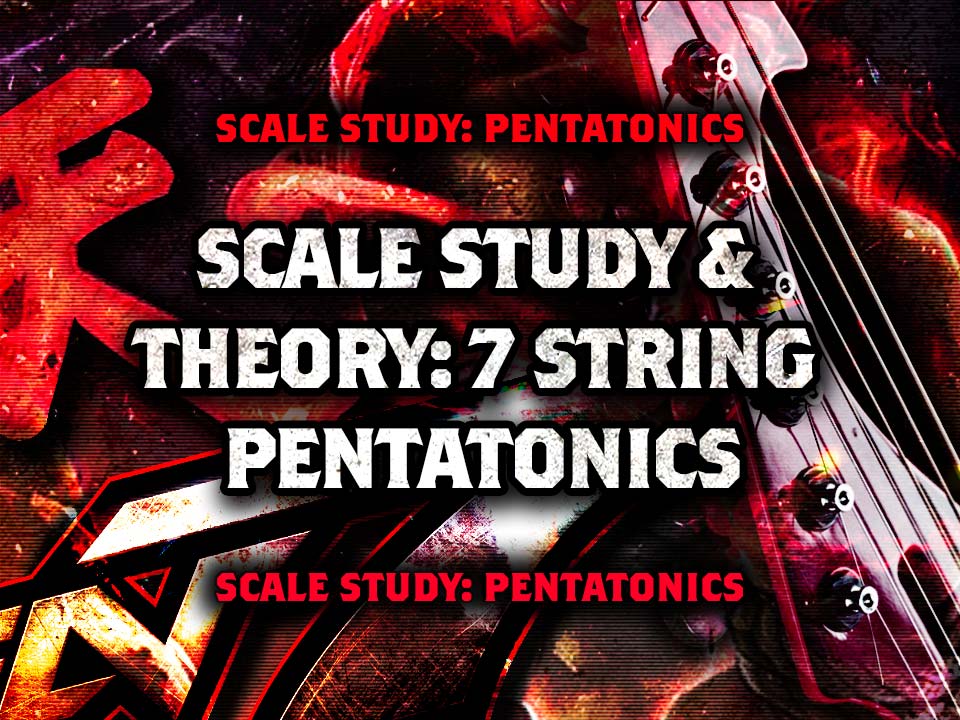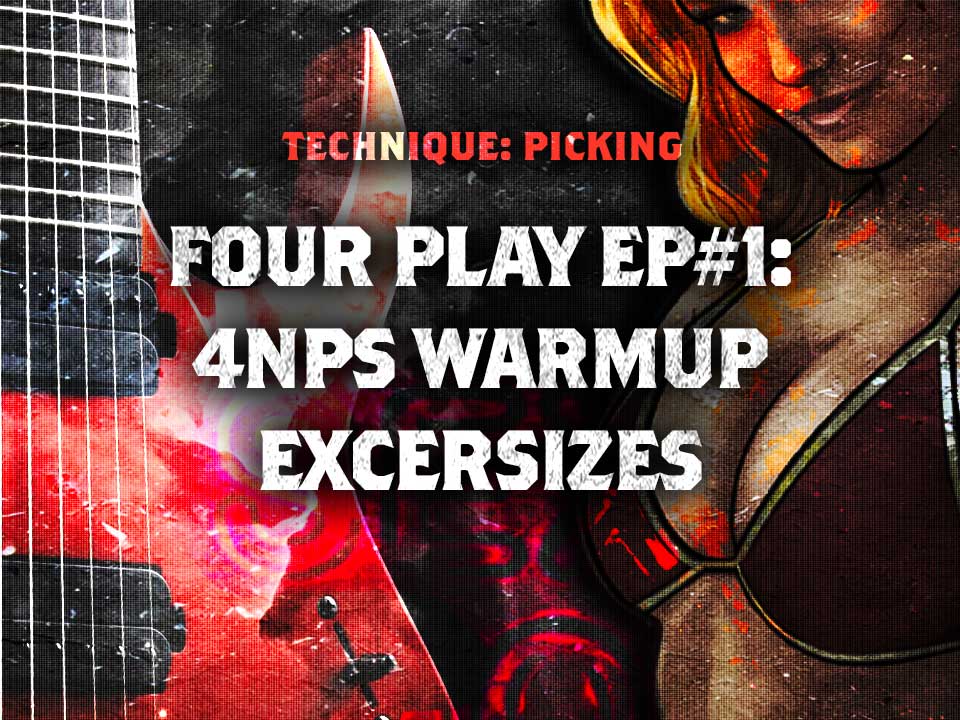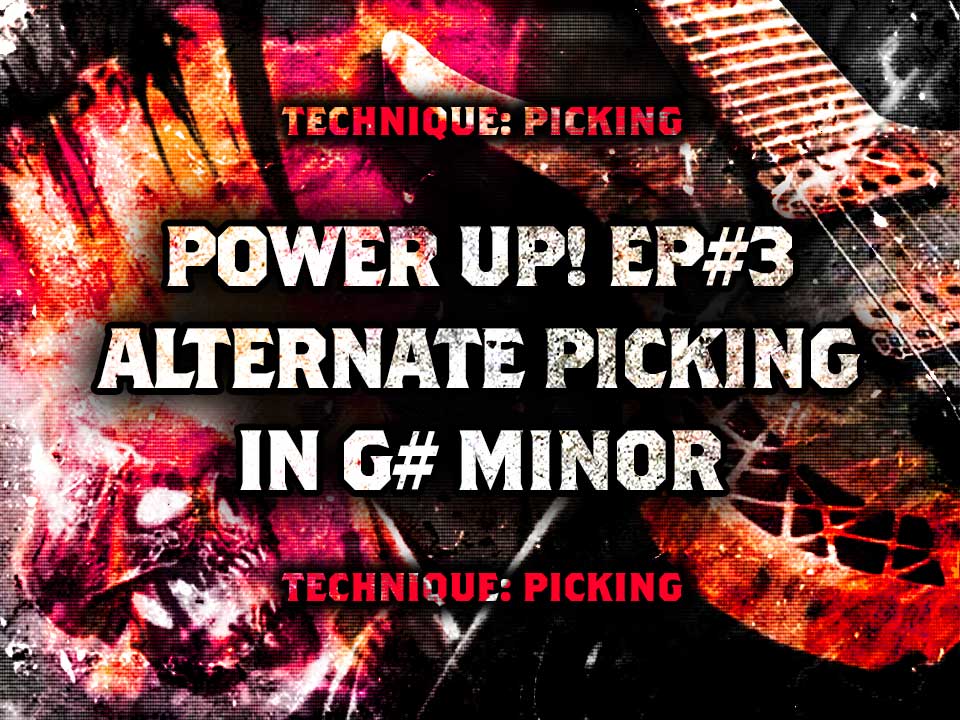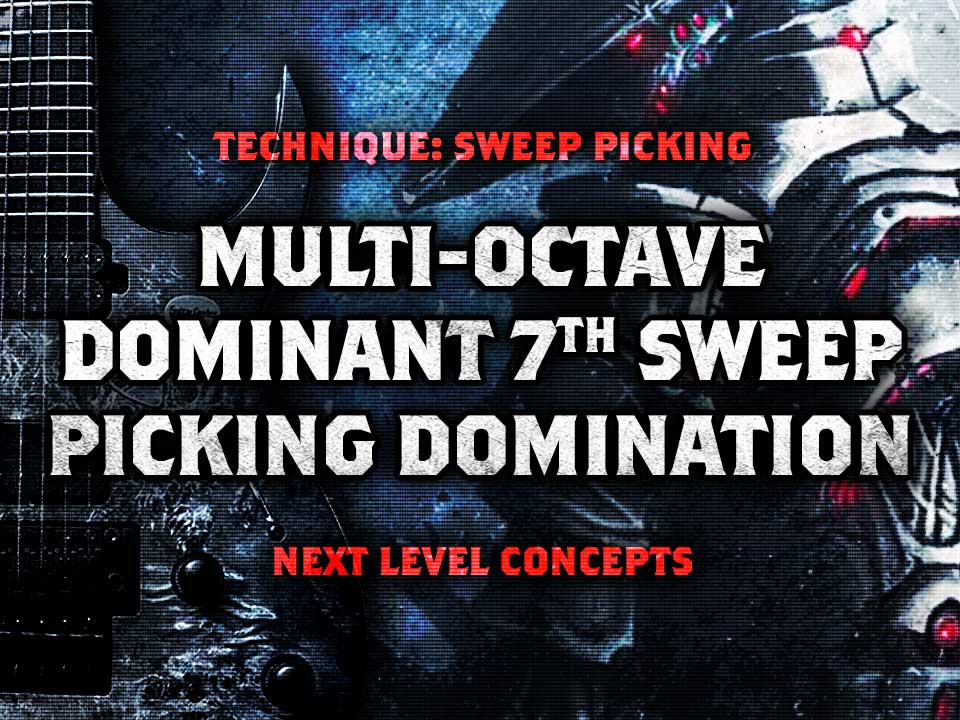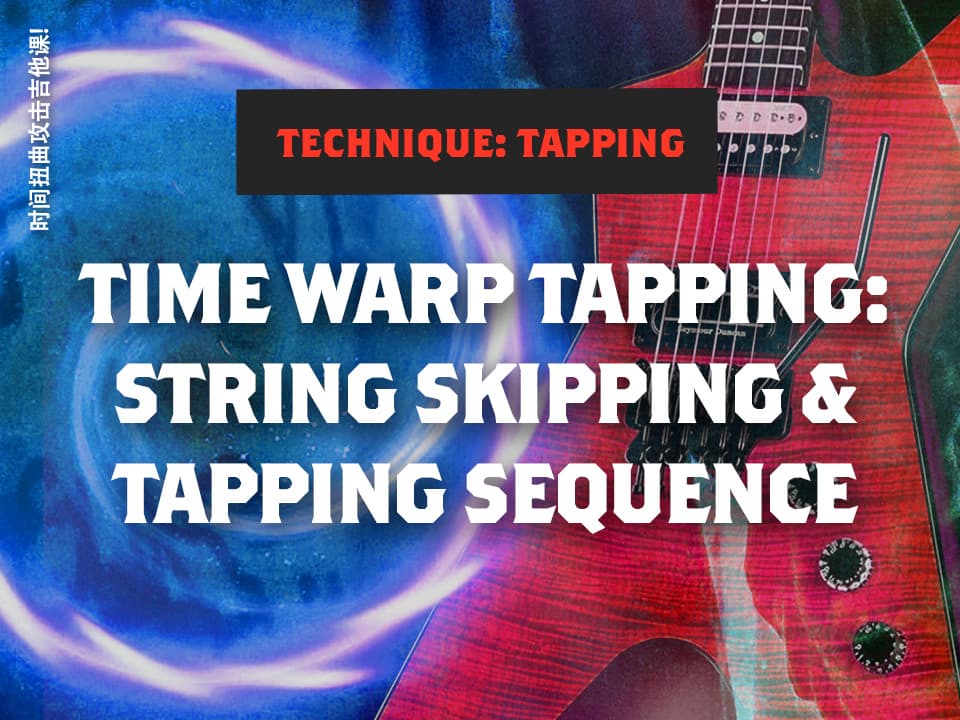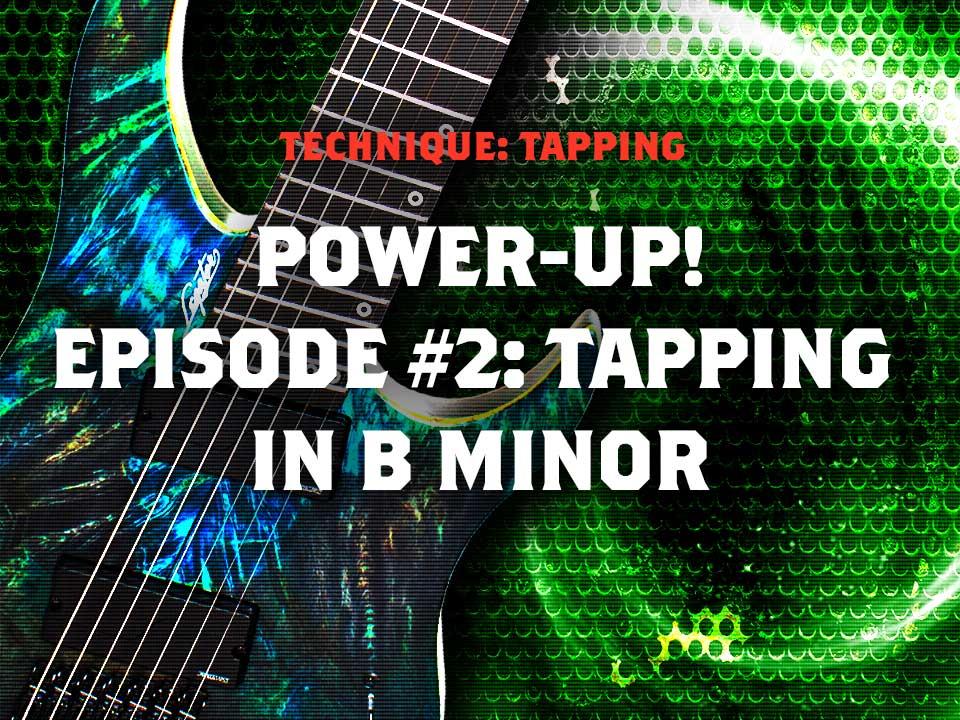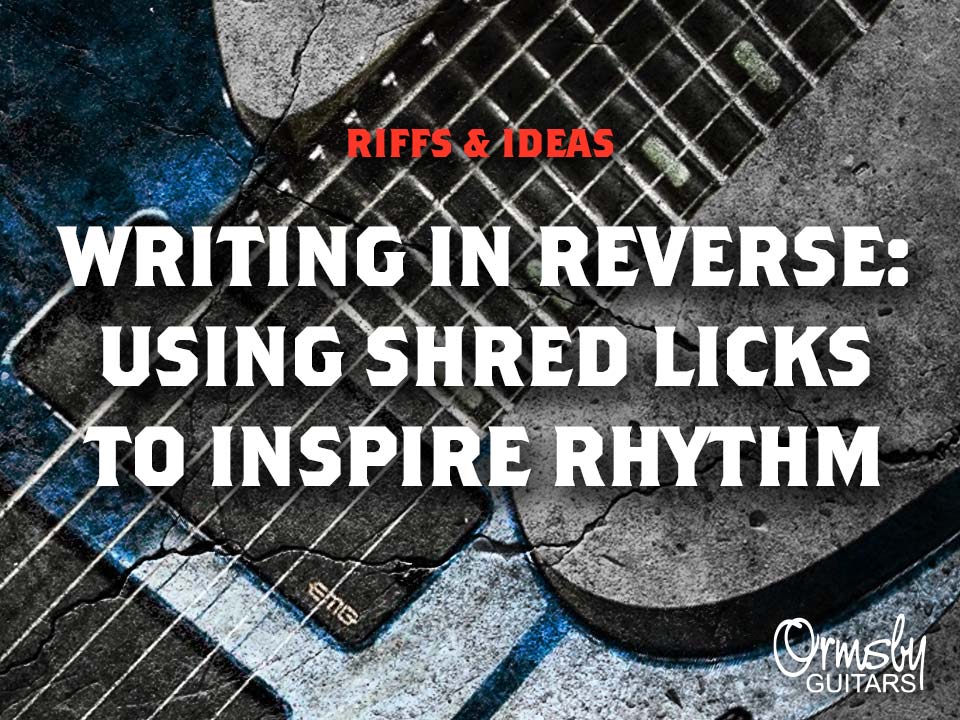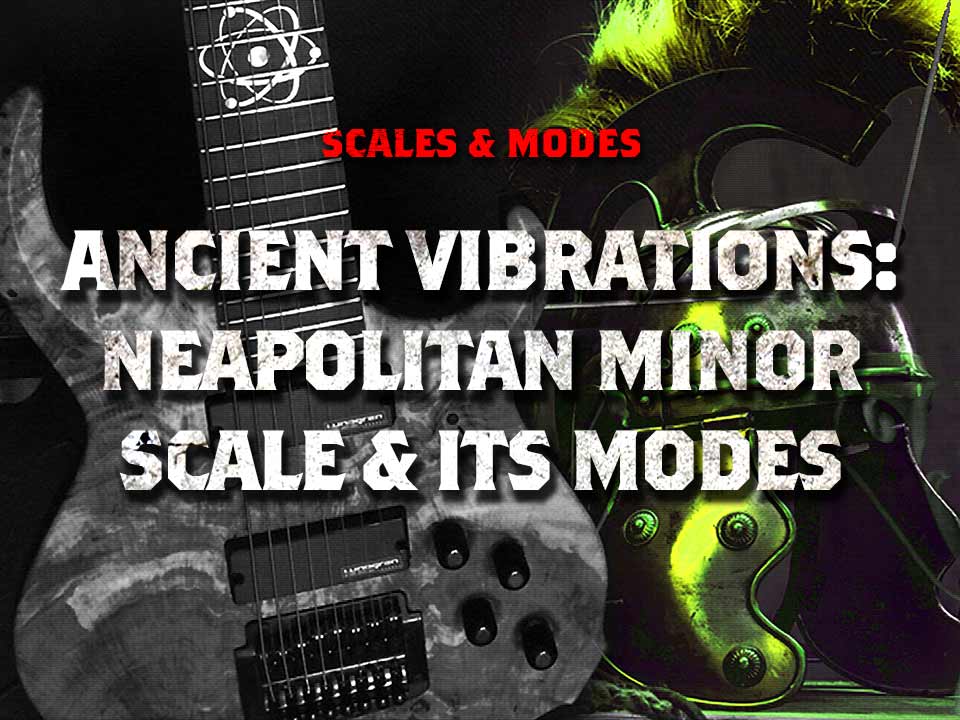Welcome guitar fans, to yet another in depth scale study & theory lesson. This time we’re looking at the mysterious Pentatonics of Melodic Minor. The Major b6 Pentatonic & The Minor b5 Pentatonic.
These are scales that most players don’t know but will add a new arsenal of exotic possibility to your playing if you can nail them down. This lesson goes deep, so warm up, plug in, & get ready!
The basic format for the pentatonics of melodic minor are still two note per string, however the fingerings and intervals will feel unconventional if you’re used to the standard major and minor pentatonics. We’re going to look at these scales on a 7 string guitar however if you don’t have a 7 string, don’t worry! You can still learn these shapes but your root notes will change.
Continue ReadingIn this lesson we’re going to look at Harmonic minor for 8 string guitar and its Modes. We’re using standard tuning: F#, B, E, A, D, G, B, E. Each mode pattern will be 3 notes per string.
Before looking at Harmonic minor for 8 string, first we need to understand the difference between the Natural minor Scale and the Harmonic minor Scale. Natural minor, or just minor, is the 6th mode of the Major scale, also called the Aeolian Mode. In order to get the Harmonic minor scale we need to raise the pitch of the 7th note by a semi-tone.
Continue ReadingWelcome back extended range players! In this episode we’re checking out the three-note-per-string melodic minor modes for 7 string guitar, tuning BEADGBE. We’ll also outline some theory for the melodic minor modes so you’ve got basic understanding of their application.
In metal, melodic minor and its modes are widely disregarded and rarely considered for songwriting, however it can yield some amazing dissonant results and open up entirely new ideas. Even more creative ideas can be unleashed if you combine these with the intervallic Pentatonics of Melodic Minor. Let’s check out the Melodic Minor Modes for 7 string so we can add them to our modal arsenal!
Continue ReadingToday we’re going to learn how to play an arpeggio using two handed tapping. We’ll focus on Dm7 and go over some ways of practicing it. Then we’ll look at how to start using it to improvise over a backing track. The aim is to get to a point where you can play the arpeggio fast and cleanly.
However you also want to be able to use it melodically. Once you get to grips with it you will be able to incorporate tapped arpeggios into your playing. Then you can mix it with other techniques too.
Continue ReadingWelcome to Power Up! episode 4. This time we’re looking at Sweep Picking. We’ll be focusing on a 3 string, major chord triad. The idea here is to focus on one shape to help really develop the sweep picking technique without making things too complex.
Continue ReadingWelcome back to another scale study lesson! In this lesson we’re going to check out the 5 positions of the pentatonic scale and how they translate to the 7 string guitar! We’ll also look at some extended concepts for advanced pentatonic application. All these examples can be applied to 6 string as well but more players are looking to the extended range guitars to take their playing to the next level and expand their knowledge.
In this lesson we’ll not only learn the 5 positions of the Pentatonics for 7 String Guitar. We’ll also learn how they reference the corresponding modes of the major scale. If you have the ability to mix your pentatonic and modal playing this will massively help you visualise the neck. This will also help you create interesting melodies and new creative ideas. We’ll also include some advanced concepts that will help you break out of the standard ways of playing pentatonics.
Continue ReadingIn this lesson we’ll be looking at a couple of quick warmup exercises that uses all 4 fingers. We’ll start with a chromatic pattern and then look at a couple of variations. 4 finger patterns are a perfect way to get warmed up as well as become more accustom to using all 4 fingers more efficiently.
The aim with this guitar warmup exercise is to warmup your picking hand and fretboard hand & fingers. Once warmed up you can start to practice more complex ideas with less risk of strain or injury. When using alternate picking make sure that both hands are really in sync with each other. If you’re used to picking in a 3nps fashion then this will really be a test of your dexterity.
Continue ReadingWelcome to episode 3 of Power Up! This time we’ll be looking at a simple picking lick. The idea is to repeat this slowly over and over to develop coordination between your fretboard hand and your picking hand.
Developing coordination with this odd time alternate picking idea across all 4 fingers on your fretboard hand will help not only with picking ideas like this but also many other aspects of your playing, from advanced chords to riffs and of course shred techniques.
Continue ReadingWe’re Levelling Up! In this advanced multi finger tapping lesson we’ll break down a Phrygian Dominant tapping lick that switches between a 5 and 6 finger pattern across two strings. We’ve written a short piece of music for this solo which you can download as a backing track to practice these ideas. Player 1 Press Start!
There’s some cool ideas packed into this multi finger tapping lesson so lets get into it! This 5 & 6 finger tapping T2 T3 tapping idea using the three octave Phrygian Dominant mode. For reference; Phrygian Dominant is mode #5 of its parent scale which is Harmonic Minor. Using and adapting three octave scales makes licks really easy since they simply repeat across the neck in big octave jumps every two strings. This also means you can cover a large part of the neck really quickly.
Continue ReadingToday we’re going to look at some arpeggios for seven string guitar. In this episode we’ll learn some of the basic triads across 7 strings and then in future episodes we will expand on these to form more complex chord arpeggios.
If you’re an extended range player you’re probably already curious as to how to expand your ability to include the 7th string. These 7 String Sweep Picking ideas will definitely test your playing and finger dexterity. Always remember to take these ideas slow at first, speed is always a by-product of control! Lets go!
Continue ReadingWelcome! In this Strings of Rage™ webisode we’re going to look at a unique way to blaze through multiple octaves across the neck. This is a great way to cover a lot of the neck quickly and creatively. This works out great not only as a rippin’ shred lick but you can weave these types of exotic dominant sounding ideas into your lead melodies as well.
To do these Dominant Sweep Picking Arpeggios we’re going to use the dominant pentatonic scale as our basis. With a bit of creative thinking we can lay out this scale in a way that lends itself to an ultra efficient & seamless sweep picking pattern. Let’s get to it!
Continue ReadingWelcome! In this lesson we’re going to learn a creative string skipping and tapping sequence that changes key on the same root note, meaning that we’ll change between G Major & G Minor. We’ll also be using some extended arpeggios that use 7th and 9th extensions.
We’re going to take two basic string skipping tapped arpeggios and make a sequence out of them to make it more interesting. This tapping sequence uses T2 and T3 tapping, that’s two fingers on your picking hand. Usually I would suggest your middle and ring finger so you can still hold the pick. For a really creative sound that throws your listener off we’re going to change key using the same root note. Let take a look at these basic shapes first and then we can check out the sequence.
Continue ReadingToday we’re going to look at some ‘Tritone Substitutions’. So what is a Tritone and what is a Substitution?
Continue ReadingUnderstanding the differences between the scales and modes can feel like a daunting task. What makes a scale Major or Minor? Why do we get different chords from different scales? Understanding the intervals which make up each scale or mode can help. One way to do this is to learn the scales across a single string so that you can more easily see the distances between notes.
In this post we’re going to look at 11 different scales/modes, all starting from the root note A. We’ll play these single string scales on the A string to keep things simple. Moving these patterns to other strings will give you different key centers as will moving the patterns up the fretboard. We’ll start by looking at all twelve intervals in relation to the note A:
Continue ReadingIn this episode of Power Up! we’re going to look at a simple tapping lick in B minor. This will help you to perfect the technique before moving on to more complex tapping ideas.
Tapping in B Minor – We’re going to tap with both hands rather than pulling off from the picking hand to the fret-board hand, although feel free to play it that way too. This will give us a slight “staccato” feel. Check out the video below:
Continue ReadingWelcome! Today we’re going to look at a simple Legato lick to help ‘power-up’ our playing. The aim is to improve our dexterity, finger strength and stamina.
In traditional musical notation “Legato” means to play or sing notes smoothly transitioning from one to the next with no gaps in between. (The opposite of this would be Staccato, where you cut off each note and have a brief silence before the next note.
Continue ReadingWriting (not Falling) In Reverse! In this lesson we’re going to look at some ways to add rhythms to a lead guitar part when the lead part was written first. We’ll use a lick that we’ve previously written in B phrygian to demonstrate and find inspiration to how this can work.
Most commonly you would write a rhythm track and song structure before exploring how melodies and solos can work over the given chords. Understanding how to reverse engineer these ideas will not only help writing a guitar solo, but it will help your guitar playing in many other ways too. If you can master this you’ll be a versatile band musician as well. If you’re anything like us you’ll always find times where you’ve written an incredible lead lick, solo or melody that then needs backing music to support it! Let’s get into it!
Continue ReadingWe’re back for another deep dive into some exotic sounds, this time through the mystical Neapolitan Minor Scale! If you’re looking to unleash some exotic flavours into your playing then check this out! We’ll be learning all the modes of this scale as well as the chord qualities that can be derived from each mode. Let’s get into it!
The Neapolitan minor scale is a really exciting one, you could think of it as harmonic minor with added chromaticism. Used in the right way, this scale and its related modes can really throw your listener off with dramatic effect! We’ll be sure to check out the modes of this scale as well as the corresponding chords that are available.
Continue ReadingHello! Today we’re going to look at a few different ways you can add some extra interest to a solo, chord progression or riff by using a wah-wah pedal. The Wah is a truly classic pedal, however, even now, there’s still many reasons to have this formidable pedal in your effects arsenal!
There are various makes and models of ‘wah’ out there. The Dunlop ‘Crybaby’ is probably the best known. There’s also the Morley ‘Bad Horsie’, the Boss ‘V-wah’ and the Snarling Dogs ‘Fire Bawl’ (See cover image) to name just a few. I personally use an Ibanez ‘Weeping Demon’.
Let’s go through some examples of how the wah effect can be used, how it works and some examples of songs which use it.
Continue Reading